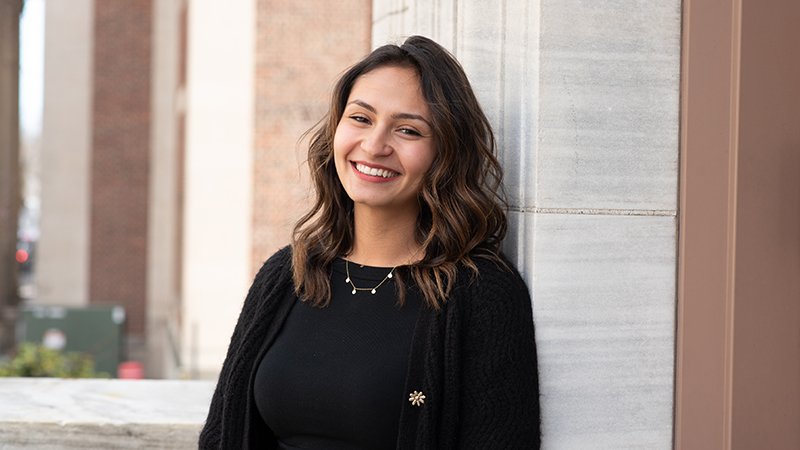I study how the immune system and blood-clotting factors interact in gum disease. I work with genetically modified mice to understand the role of specific genes and analyze their tissues to see how immune cells behave in health versus disease. I try to figure out what’s going wrong so we can find better treatments!
Photo by Celia Muto
What are the big questions driving your research?
We are studying the role of the Plasminogen gene in disease, particularly how immune cells like neutrophils respond to inflammation and wound healing, mainly in the oral mucosa. Why do some people develop severe inflammation while others don’t? How do specific genes shape immune responses? We’re exploring the Plasminogen/Plasmin system, which plays a crucial role in diseases like atherosclerosis, cancer, cardiovascular disease and of course, periodontitis. Since plasminogen also contributes to neuroinflammation, understanding its function in the gums could offer insight into how it affects brain diseases such as Alzheimer’s and multiple sclerosis.
What drew you to this area of neuroscience?
I’ve always admired neuroscientists and wanted to become one. While my current research doesn’t directly involve the brain, studying neuroscience taught me that once you understand its complexities, you can tackle any challenge and see how everything is connected. I’ve also always been interested in how different systems in the body work together, especially the immune system, which led me to join the team at Harvard School of Dental Medicine. Studying plasminogen was a great compromise because it plays a role in many areas of the body, including the brain.
What has been the most surprising thing you’ve learned in the lab or classroom so far?
When I took the Neurobiology course at Radboud University in the Netherlands, we dove into the details of how the brain works, and the fact that we will never know everything still amazes me. One thing that really surprised me was how the brain can rewire itself. I always knew that the brain is incredibly complex, but I was amazed to learn that it has this remarkable ability to adapt, even after injury. For example, in some cases, when one part of the brain is damaged, other parts can take over its function, almost like the brain is hiring new workers for the job. It’s crazy to think how much the brain can change and reorganize itself.
What is the trait you most admire in others?
The trait I most admire in others is humility. Especially being at Harvard, where we are surrounded by such brilliant minds and exceptional researchers, it’s inspiring to see how many of them remain approachable and down-to-earth. Even Nobel Prize winners are happy to answer questions and share their knowledge, which reminds me that no matter how much we achieve, we always have room to grow and learn from others.
What are your hopes for the future?
We live in a time of uncertainty in research, with many challenges ahead. What I know for sure is that I want to continue pushing science forward every day, contribute to advancing our understanding of important topics, and support others—especially women in science. One of my greatest goals is to be a mentor, just as I’ve been very lucky to have mentors who have helped me grow and guided me through my journey.

